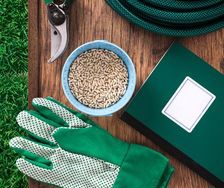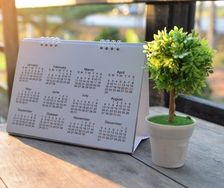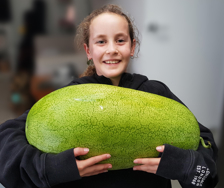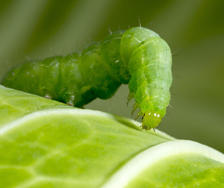Yates Account
Join now
Create a Yates account today!
Sign up to join the Yates Garden Club for monthly e-mails packed with seasonal inspiration, tips for success & exclusive promotions.
Plus if you’re a Garden Club member you can take part in the Yates Growing Community - a blog to share successes, get advice & win prizes in fun challenges along the way!

Forgot password
Enter the email address associated with your account, and we'll email you a new password.

The Okra plant is a lush looking, upright bush. The ribbed green pods develop from pretty pale-yellow flowers. Also known as 'lady fingers', this warm-weather-loving shrub is interesting to grow and attractive too, so it looks at home in either a vegie patch or a garden bed.
Okra can be grown in all areas of New Zealand during the warmest months. In subtropical areas sow seed from late winter to the end of summer; in temperate climates sow in spring and early summer, in cool climates sow in late spring and early summer. Depending on your local climate, okra will be ready to harvest approximately 16 - 20 weeks after sowing.
How to Grow Okra in a Garden
Step 1 - Choose a Location
Choose a wind protected spot in your garden that's in full sun (at least six hours of sun is ideal) and has well-drained soil. Okra can be grown in all areas around New Zealand during the warmest months. Okra isn't frost tolerant, so in cooler climates it should be grown in late spring, after the risk of frost has passed.
Step 2 – Improve the Soil, then Sow or Plant
Okra can be grown from seed or established plants.
Prior to sowing or planting, improve the soil with Yates Dynamic Lifter Organic Plant Food. It's a rich source of organic matter to help improve soil structure and water holding capacity, as well as attract earthworms and beneficial soil microorganisms.
Yates Okra Clemson Spineless, a popular Okra variety, can be sown direct where the plants are to grow. Sow seed of this vigorous variety 6mm deep, 50-60cm apart, and seedlings should emerge in 10-14 days. Alternatively, sow seeds into punnets or trays of Yates Black Magic Seed Raising Mix and later transplant the seedlings into their final position when they're big enough to handle.
When transplanting Okra seedlings or planting out more established plants, dig the planting hole twice as wide and to the same depth as the root ball. Carefully remove the seedling or young plant from the tray, punnet or pot, place the plant in the hole and backfill around the roots with soil. Okra's roots are easily damaged, so care during transplanting is required. Water in well to settle the soil around the roots.
Step 3 – Early Okra Care
Keep the soil moist as the plant establishes. Applying a layer of mulch around the root zone will help keep the soil moist and protect the delicate root system. Snails and slugs can damage young Okra plants, so protect them with a light sprinkling of Yates Blitzem Slug & Snail Pellets.
Step 4 – Watering & Feeding Okra
Okra can tolerate hot summers and dry spells, but it's best to keep the soil consistently moist. Feed regularly throughout the growing, flowering and fruiting season with Yates Thrive Flower & Fruit Soluble Fertiliser to promote healthy growth and lots of flowers and fruit.
Step 5 - Harvesting Okra
When growing Okra from seed, it can take 16-20 weeks for pods to be ready to pick. First, you'll see attractive (but short lived) yellow flowers, and slender green pods form a few days after the flowers open. There are some varieties of Okra with red or burgundy pods. Harvest Okra pods when they're young, before they lose their tenderness. Yates Okra Clemson Spineless pods should be picked when they're 5-7cm long. It's easiest to pick pods using scissors or secateurs. To promote a long harvest season, pick the pods regularly.
Skin irritation can occur for some people after contact with Okra leaves, stems or pods. For people with sensitive skin, wearing gloves and long-sleeved clothing is recommended when handling Okra. Spineless varieties have less spines, however care should still be taken when handling.
How to Grow Okra in a Pot
Step 1 – Choose a Pot & Location
Choose a well-drained pot at least 300 mm wide. Position in a wind protected spot that’s in full sun (at least six hours of sun is ideal). Okra can be grown in all areas around New Zealand during the warmest months. Okra isn't frost tolerant so in cooler climates it should be grown in late spring, after the risk of frost has passed.
Fill the pot with a quality potting mix, like Yates Premium Potting Mix.
Step 2 – Sowing or Planting
Okra can be grown from seed or established plants. When growing Okra from seed, you can sow directly into the pot. Sow a few seeds 6 mm deep in a clump in the middle of the pot; seedlings should emerge in 10-14 days. Excess seedlings can be removed, leaving the strongest seedling. Alternatively, sow seeds into punnets or trays of Yates Black Magic Seed Raising Mix and later transplant the seedlings into their final pots when they're big enough to handle.
When growing Okra from more established plants, dig the planting hole in the potting mix twice as wide and to the same depth as the root ball. Carefully remove the young plant from its existing pot, place the plant in the hole and backfill around the roots with potting mix. Okra's roots are easily damaged so care during transplanting is required. Water in well to settle the soil around the roots.
Step 3 – Early Okra Care
Keep the potting mix moist as the plant establishes. Applying a layer of mulch around the root zone will help keep the potting mix moist and protect the delicate root system.
Step 4 – Watering & Feeding Okra
Okra can tolerate hot summers and dry spells, but it's best to keep the potting mix consistently moist. Feed regularly throughout the growing, flowering and fruiting season with Yates Thrive Flower & Fruit Soluble Fertiliser to promote healthy growth and lots of flowers and fruit.
Step 5 – Harvesting
When growing Okra from seed, it can take 16-20 weeks for pods to be ready to pick. First, you'll see attractive (but short lived) yellow flowers, and slender green pods form a few days after the flowers open. There are some varieties of Okra with red or burgundy pods. Harvest Okra pods when they're young, before they lose their tenderness. Yates Okra Clemson Spineless pods should be picked when they're 5-7 cm long. It's easiest to pick pods using scissors or secateurs. To promote a long harvest season, pick the pods regularly.
Okra Growing Tips
When's the Best Time to Sow Okra Seed?
In subtropical areas sow seed from late winter to the end of summer; in temperate climates sow in spring and early summer, in cool climates sow in late spring and early summer.
Is Okra an Annual Plant?
In cool and temperate climates Okra should be treated as an annual plant and new seed sown each year. In warm climates Okra plants can be perennial.
What's the Best Fertiliser for Okra?
A high potassium fertiliser like Yates Thrive Flower & Fruit Soluble Fertiliser is best when growing Okra. Potassium is the key nutrient to promote flowering and fruit production.
How Do I Get a Bigger Okra Harvest?
Fertilising regularly (every one-to-two weeks) with a high potassium fertiliser will encourage healthy plants, lots of flowers and plentiful Okra pods. Picking young pods regularly also keeps the harvest going for longer.
Do I Need to Soak Okra Seeds Before Sowing?
Soaking Okra seed isn't crucial, but the germination rate of Okra seed can be improved by soaking seeds in water for 12 hours prior to sowing.
What's the Best Soil for Okra?
Okra does best in moist but well-drained, organic-rich soil with a neutral or slightly acidic pH (pH 6.5 - 7.0).
How Tall Does Okra Get?
Depending on the variety, Okra grows between 1m and 1.5m tall.
Do I Need To Stake Okra?
It's best to plant Okra in a wind-protected spot. In exposed areas, plants may need to be supported with a stake, particularly once the plant becomes heavier with pods.
How Long Does It Take for Okra To Be Ready To Harvest?
It can take 16-20 weeks for pods from seed-grown Okra plants to be ready to pick. So, seed sown in early spring will be ready to harvest in mid to late summer.

















Share
Share this article on social media